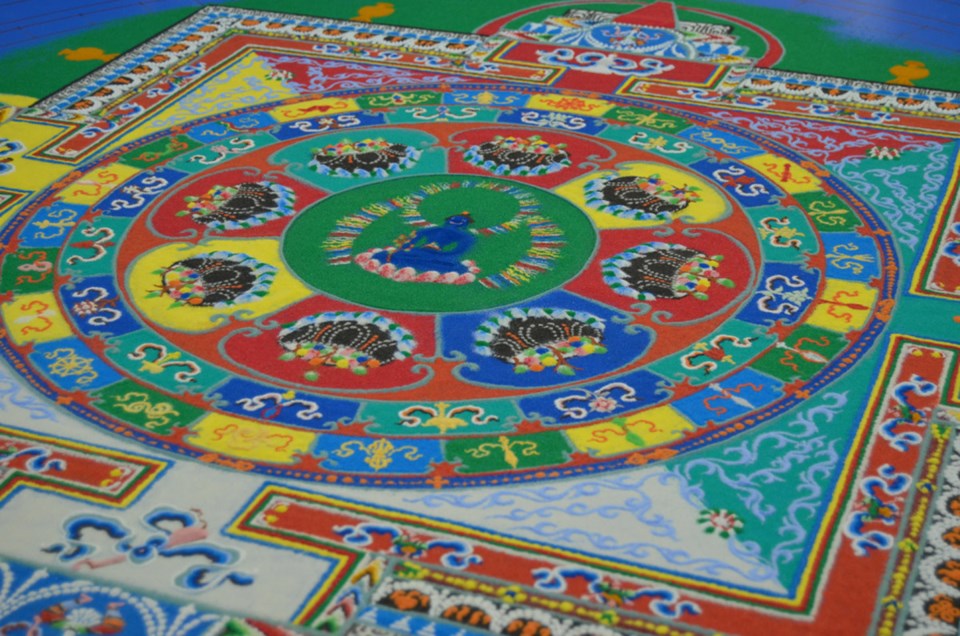I had what will most likely be a once-in-a-lifetime experience last week. For almost an hour I watched a renowned Tibetan scholar and former Buddhist monk, (who at one time worked with the Dalai Lama) Losang Samten, as he created a sand mandala. The work was in its eighth day and would be finished with about another three days of work. This mandala was a recreation of the Medicine Buddha Mandala that has been handed down for over 2,000 years.
Using a funnel-like device (called a chak-pur) coloured sand granules are laid down are laid down according to the pattern the artist follows in the traditional design. The colours and positions all have their meanings but the artist has some creative leeway in his mandala and the work I saw was very similar to the photograph of a traditional one that is used for reference. It was simply amazing to watch the mandala grow grain of sand by grain of sand before your eyes.
When invited to observe the work close up we were jokingly warned not to sneeze. Once a grain of sand is placed it cannot be removed. This was not a work for people with shaking hands nor for those who cannot make decisions which cannot be changed.
From the handout - “Creating and viewing the mandala in varying places is very beneficial for bringing peace and harmony to the community and the world. Just to glimpse the mandala will create a positive impression on the mind-stream of the observer . . . this promotes peace, calm, and tranquility in your heart. The happiness you experience is transmitted to others.”
Perhaps the people watching the creation of the mandala were all of a similar mindset but there was no doubt I could feel the calming effect the work had on the people gathered around the table. Once again the experience reaffirmed the power that great art can have on people, whether it is viewing paintings, listening to music, or watching theatre and dance. Or simply watching a sunset or nature in all her wonder; there is so much value in ‘art’ to increase the pleasure of living.
And yet, as beautiful as this mandala was, it was destined for a ritual destruction. The destruction of the sand mandala was scheduled for one day after its completion. There would be prayers and a dedication ceremony and then in a specific order, the sand would be collected and transported to a place of moving water where it would be released back into nature. This would symbolize the ephemeral quality of life and the world.
I wondered what the former monk thought as he created this work, grain by grain, knowing that when he was finished he would destroy it and see it returned to nature. Being a Buddhist, he most likely had this sorted out in his mind, but what would we who have not yet touched ‘perfect enlightenment’ feel? Has our life been a work, like a sand mandala, that has brought joy, peace and happiness to others?
It is not too late to begin. Take your own grain of sand and carefully place it . . .



